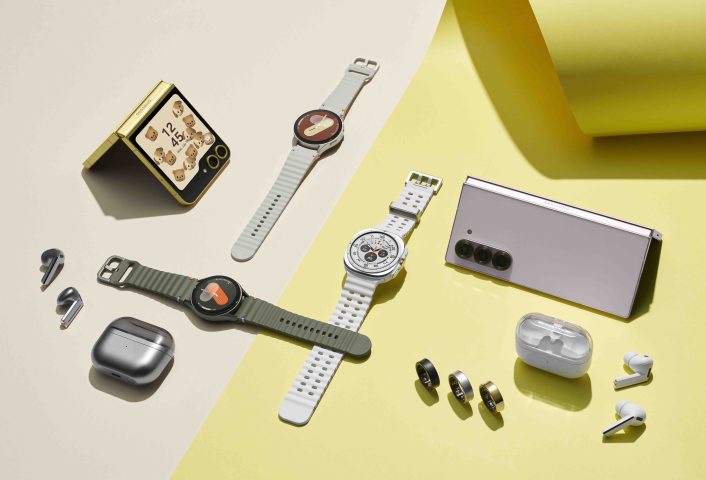Samsung has officially joined the smart ring race with its newly launched Galaxy Ring, aiming to take on the reigning champion, the Oura Ring. This sleek titanium ring, available in three colours and a range of sizes, boasts a variety of health-tracking features, including sleep monitoring, heart rate tracking, and personalized health insights.
The Galaxy Ring’s innovative charging case, gesture support, and absence of a subscription fee are significant advantages over the Oura Ring. However, its lack of NFC (Near Field Communication) technology, which enables contactless payments, is a notable omission that may disappoint some potential buyers.
While the Galaxy Ring offers a promising array of features and a convenient user experience, its inability to facilitate contactless payments raises questions about its overall competitiveness in the smart ring market. In an increasingly cashless society where tapping a wrist or phone to make a purchase has become the norm, the absence of NFC functionality could be a dealbreaker for some consumers who prioritize seamless integration between their wearable devices and their daily lives.
In this article, we’ll delve deeper into the Galaxy Ring’s features, its potential impact on the smart ring market, and the implications of its missing NFC functionality. We’ll examine the potential reasons behind Samsung’s decision, the competitive landscape, and the future outlook for the Galaxy Ring as it strives to establish itself as a major player in the ever-evolving world of wearable technology.
Pricing
Samsung’s Galaxy Ring is priced uniformly at £399, regardless of size or color. This is notably higher than the Oura Ring, whose prices start at £299 for the silver or black heritage models and go up to £349 for the newer horizon style. The significant difference, however, lies in the subscription model. The Galaxy Ring does not require any monthly fees, while the Oura Ring charges a £5.99 monthly subscription for full access to health insights. Without this subscription, the Oura Ring’s functionality is significantly limited.
Design and Comfort
Both rings are crafted from durable titanium and share a similar aesthetic. The Galaxy Ring is slightly thinner and lighter, with a thickness of 2.6mm and a width of 7mm, compared to the Oura Ring’s 2.5-2.9mm thickness and 7.9mm width. The Galaxy Ring weighs between 2.3g and 3g, whereas the Oura Ring ranges from 4g to 6g. Samsung offers the Galaxy Ring in three colors (silver, gold, and black) and nine sizes (5-13), whereas the Oura Ring comes in eight sizes (6-13) and a wider array of colors and finishes.

Charging mechanisms differ significantly: the Galaxy Ring uses a wireless chargeable case, which is portable and can hold several charges, whereas the Oura Ring relies on a cradle. Both rings offer a week of battery life on a single charge and are water-resistant up to 100 meters.
Features
The Galaxy Ring is compatible only with Android devices and pairs best with Samsung Galaxy smartphones, excluding iPhone users from its potential customer base. Both rings feature similar sensors, including an accelerometer, photoplethysmography sensor (PPG), and skin temperature sensor. The Oura Ring adds an IR sensor for better alignment on the finger.
Both devices track heart rate, sleep, body temperature, activity, menstrual cycles, and pregnancy insights. The Oura Ring also provides an indicator of cardiovascular age and recently introduced an AI Advisor for enhanced health insights. Samsung’s Galaxy Ring offers an “Energy Score” and personalized health tips within the Samsung Health app. However, its activity tracking is limited to runs and walks, whereas the Oura Ring automatically tracks 40 different workouts.
A unique feature of the Galaxy Ring is its double pinch gesture capability, allowing users to perform actions like taking pictures or stopping alarms with a simple finger gesture, a functionality not available on the Oura Ring.

The Verdict: Galaxy Ring Shows Promise, But Awaits Full Evaluation
Early impressions of the Galaxy Ring suggest it has the potential to disrupt the smart ring market, particularly for Android users who are drawn to its subscription-free model, convenient wireless charging case, unique gesture control. This combination of features could make the Galaxy Ring a compelling alternative to the Oura Ring.
However, while initial feedback is positive, a definitive verdict on the Galaxy Ring’s overall performance and value proposition requires more time. The ring’s full range of capabilities, its accuracy in health tracking, and the user experience in real-world scenarios still need to be thoroughly evaluated. Additionally, the Galaxy Ring’s compatibility limitation to Android devices is a significant drawback that might deter potential iPhone users.
We at Loopline Media are committed to delivering a comprehensive and unbiased review of the Galaxy Ring once we have had the opportunity to put it through its paces. Until then, Android users, particularly those within the Samsung ecosystem, may find the Galaxy Ring’s feature set and seamless integration with their devices to be particularly enticing.
Stay tuned for our in-depth analysis and final verdict on whether the Galaxy Ring is a worthy investment and a true competitor to the Oura Ring in the ever-evolving world of wearable health technology.
Disclaimer:
The views and opinions expressed in this article are based on initial impressions and publicly available information from The Independent and do not constitute a comprehensive or final evaluation of the Samsung Galaxy Ring. Loopline Media has not yet conducted independent testing of the product. The information provided herein is for informational purposes only and should not be considered as professional, financial, or medical advice. Loopline Media makes no representations or warranties of any kind, express or implied, about the completeness, accuracy, reliability, suitability, or availability of the information contained in this article. Any reliance you place on such information is therefore strictly at your own risk.




